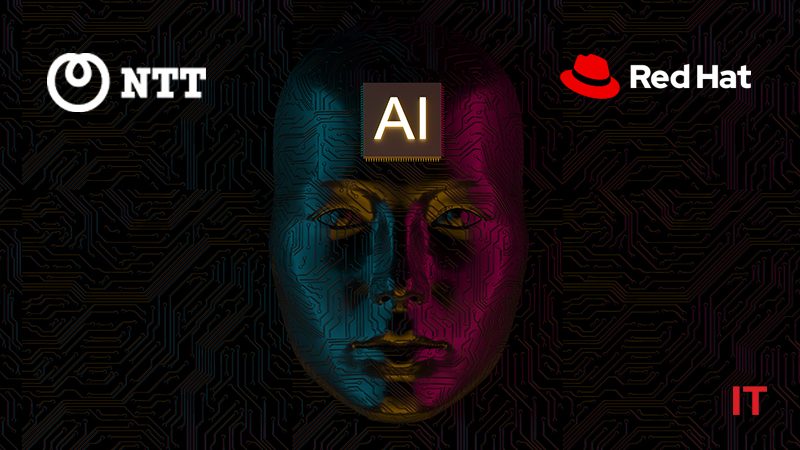MWC Barcelona As part of the Innovative Optical and Wireless Network (IOWN) initiative, NTT Corporation (NTT) and Red Hat, Inc., in collaboration with NVIDIA and Fujitsu, have jointly developed a solution to enhance and extend the potential for real-time artificial intelligence (AI) data analysis at the edge. Using technologies developed by the IOWN Global Forum and built on the foundation of Red Hat OpenShift, the industry’s leading hybrid cloud application platform powered by Kubernetes, this solution has received an IOWN Global Forum’s Proof of Concept (PoC)1 2 recognition for its real world viability and use cases.
As AI, sensing technology and networking innovation continues to accelerate, using AI analysis to assess and triage input at the network’s edge will be critical, especially as data sources expand almost daily. Using AI analysis on a large scale, however, can be slow and complex, and can be associated with higher maintenance costs and software upkeep to onboard new AI models and additional hardware. With edge computing capabilities emerging in more remote locations, AI analysis can be placed closer to the sensors, reducing latency and increasing bandwidth.
This solution consists of the IOWN All-Photonics Network (APN) and data pipeline acceleration technologies in IOWN Data-Centric Infrastructure (DCI). NTT’s accelerated data pipeline for AI adopts Remote Direct Memory Access (RDMA) over APN to efficiently collect and process large amounts of sensor data at the edge. Container orchestration technology from Red Hat OpenShift3 provides greater flexibility to operate workloads within the accelerated data pipeline across geographically distributed and remote data centers. NTT and Red Hat have successfully demonstrated that this solution can effectively reduce power consumption while maintaining lower latency for real-time AI analysis at the edge.
The proof of concept evaluated a real-time AI analysis platform4 with Yokosuka City as the sensor installation base and Musashino City as the remote data center, both connected via APN. As a result, even when a large number of cameras were accommodated, the latency required to aggregate sensor data for AI analysis was reduced by 60% compared to conventional AI inference workloads. Additionally, the IOWN PoC testing demonstrated that the power consumption required for AI analysis for each camera at the edge could be reduced 40% from conventional technology. This real-time AI analysis platform allows the GPU to be scaled up to accommodate a larger number of cameras without the CPU becoming a bottleneck. According to a trial calculation, assuming that 1,000 cameras can be accommodated, it is expected that power consumption can be further reduced by 60%. The highlights of the proof of concept for this solution are as follows:
Over the last few years, we’ve worked as part of IOWN Global Forum to set the stage for AI innovation powered by open source and deliver technologies that help us make smarter choices for the future. This is important and exciting work, and these results help prove that we can build AI-enabled solutions that are sustainable and innovative for businesses across the globe. With Red Hat OpenShift, we can help NTT provide large-scale AI data analysis in real time and without limitations.”
SOURCE: Businesswire
































